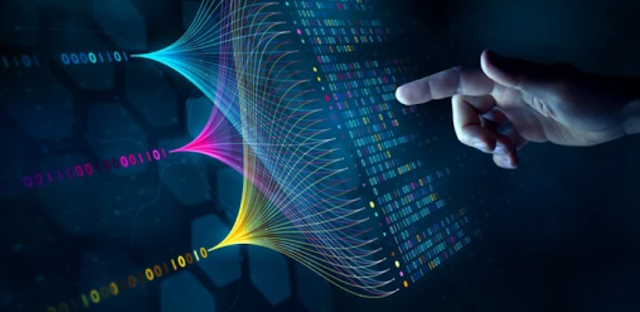Computer Vision: Revolutionizing Visual Data Analysis with AI
Computer vision is a field of artificial intelligence (AI) that focuses on enabling computers to interpret and understand visual data, such as images and videos. It involves developing algorithms and techniques that mimic human vision capabilities, allowing machines to analyze and extract meaningful information from visual content. Computer vision has revolutionized visual data analysis across various industries and applications. Here is a detailed exploration of computer vision and its impact on visual data analysis with AI.
Image Recognition and Classification:
Computer vision enables machines to recognize and classify objects within images or videos. Deep learning algorithms, such as convolutional neural networks (CNN), have significantly advanced image recognition capabilities. These algorithms can learn hierarchical representations of visual features, enabling accurate identification and classification of objects, scenes, and patterns. Image recognition is used in applications like facial recognition, object detection, autonomous vehicles, and quality control in manufacturing.
Object Detection and Tracking:
Computer vision algorithms can detect and locate specific objects within images or videos. They can identify and track objects in real-time, even in complex and dynamic environments. Object detection and tracking find applications in surveillance systems, video analytics, autonomous robotics, and augmented reality. These algorithms can identify and track moving objects, monitor their behavior, and generate insights for various purposes.
Image Segmentation:
Computer vision techniques enable the segmentation of images, dividing them into meaningful regions or segments based on their visual properties. This process helps to identify and extract specific objects or regions of interest within an image. Image segmentation is utilized in medical imaging for identifying anatomical structures, in autonomous driving for scene understanding, and in video editing for object extraction.
Visual Recognition and Understanding:
Computer vision enables machines to understand the content and context of visual data. It involves higher-level tasks such as scene recognition, visual understanding, and image captioning. Visual recognition algorithms can analyze the content of an image and provide detailed descriptions or contextual information. This capability finds applications in content-based image retrieval, visual search, and automated image annotation.
Video Analysis:
Computer vision techniques extend to the analysis of videos, enabling machines to understand and extract information from video data. Video analysis involves tasks such as object tracking, activity recognition, and event detection. Computer vision algorithms can identify and track objects over time, recognize human actions, and detect specific events or anomalies within videos. Video analysis has applications in surveillance, video summarization, sports analytics, and healthcare monitoring.
Augmented Reality (AR) and Virtual Reality (VR):
Computer vision is a key component in AR and VR technologies, enhancing the user experience and enabling interaction with virtual environments. Computer vision algorithms can track real-world objects or gestures, overlay virtual content onto the real world, and provide a seamless integration of virtual and real-world elements. This technology is used in applications like gaming, education, training simulations, and visualization.
Quality Control and Inspection:
Computer vision is employed in quality control and inspection processes, ensuring product quality and minimizing defects. Vision-based systems can analyze images or videos of products, components, or production lines to identify defects, measure dimensions, and perform quality assessments. This improves manufacturing efficiency, reduces errors, and maintains consistent quality standards.
Medical Imaging and Healthcare:
Computer vision plays a vital role in medical imaging, aiding in the diagnosis and analysis of medical conditions. It enables the interpretation of medical images, such as X-rays, CT scans, and MRIs, to detect anomalies, identify diseases, and assist in treatment planning. Computer vision techniques are also used in monitoring patient movements, tracking surgical procedures, and analyzing physiological data.
In conclusion, computer vision has revolutionized visual data analysis by enabling machines to interpret and understand visual content. Through image recognition, object detection, segmentation, video analysis, and other tasks, computer vision algorithms provide valuable insights, automate processes, and enhance decision-making across various industries. With ongoing advancements in AI and computer vision, we can expect further advancements and new applications in the field, driving innovation and efficiency in visual data analysis.












